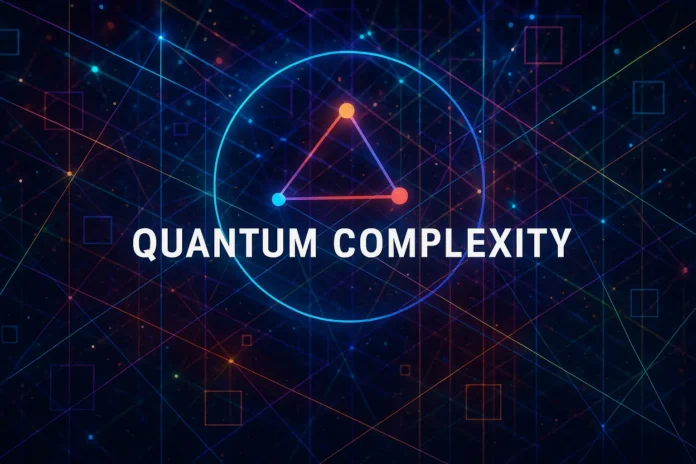Table of Contents
- Introduction
- Noise in Quantum Computation
- Fault-Tolerance vs Noise-Tolerance
- Importance of Noise Tolerance in Complexity Theory
- Noise Models: Depolarizing, Dephasing, and Stochastic Errors
- Robustness of BQP
- Error Threshold Theorems
- Fault-Tolerant Simulation and Complexity
- The Class BQEP (Bounded Error with Physical Noise)
- Approximate Computation and Stability of BQP
- Classical Complexity Classes and Noise
- Noise in AC^0 and TC^0
- Constant-Depth Quantum Circuits with Noise
- Noise in Interactive Proof Systems
- Stability of Quantum PCP Conjecture under Noise
- Noise-Resilient Quantum Algorithms
- Limitations of Quantum Advantage in Noisy Regimes
- Open Problems in Noise-Resilient Complexity Theory
- Implications for NISQ-Era Quantum Devices
- Conclusion
1. Introduction
Noise tolerance is essential for the viability of quantum computation. In computational complexity theory, studying how noise affects various complexity classes provides critical insights into which quantum algorithms are physically realizable and how resilient different computational models are.
2. Noise in Quantum Computation
Quantum systems suffer from decoherence, gate errors, and measurement imperfections. These noise sources can corrupt computation, making error correction and noise modeling vital for practical quantum computing.
3. Fault-Tolerance vs Noise-Tolerance
Fault-tolerance refers to error correction mechanisms, whereas noise-tolerance in complexity theory focuses on whether a class still captures meaningful computation when circuits experience physical noise without ideal error correction.
4. Importance of Noise Tolerance in Complexity Theory
Understanding how noise affects complexity classes like BQP, QMA, and QNC helps in designing algorithms and circuits that are resilient in practice. It also helps refine theoretical models that better match physical hardware constraints.
5. Noise Models: Depolarizing, Dephasing, and Stochastic Errors
- Depolarizing noise: Randomizes the state with fixed probability
- Dephasing noise: Destroys phase coherence in a preferred basis
- Stochastic noise: Modeled by random application of Pauli errors
Each impacts circuit behavior differently and influences class robustness.
6. Robustness of BQP
BQP is believed to be robust to polylogarithmic-depth noise with fault-tolerant encoding. With constant noise rates below a threshold, fault-tolerant simulations maintain the power of BQP under realistic noise models.
7. Error Threshold Theorems
Threshold theorems guarantee that if noise per gate is below a certain constant (e.g., 1%), fault-tolerant quantum computation is possible with only polylogarithmic overhead. This implies BQP is noise-tolerant in a strong sense.
8. Fault-Tolerant Simulation and Complexity
Simulating a noisy quantum machine with ideal gates is a complexity-theoretic challenge. Overhead from encoding, verification, and correction must be analyzed for inclusion in complexity classes like BQEP or FT-BQP.
9. The Class BQEP (Bounded-Error Quantum Efficient with Physical Noise)
BQEP consists of problems solvable by quantum circuits with bounded-error under realistic, physically allowed noise. It is designed to reflect hardware-constrained quantum computation while preserving algorithmic power.
10. Approximate Computation and Stability of BQP
Even approximate computation remains meaningful if the approximation is stable under noise. Classes like AQBQP (approximate BQP) explore this tradeoff and how it affects algorithm design.
11. Classical Complexity Classes and Noise
Classical models like AC^0 and TC^0 have been shown to have resilience to noise. Randomized error models in classical computation inform their quantum analogs and influence fault-tolerance strategies.
12. Noise in AC^0 and TC^0
AC^0 circuits can tolerate a high fraction of stochastic noise while still computing correctly with high probability. This robustness motivates study of QAC^0 and its noisy variants.
13. Constant-Depth Quantum Circuits with Noise
QNC^0 circuits with noise exhibit limited power, and many such noisy constant-depth circuits are classically simulable. This raises questions about where quantum advantage truly emerges under noise.
14. Noise in Interactive Proof Systems
Interactive protocols (like QIP) under noise involve verifier and prover resilience. Studies focus on whether quantum zero-knowledge and QMA-type protocols survive under bounded noise conditions.
15. Stability of Quantum PCP Conjecture under Noise
The quantum PCP conjecture suggests that even noisy instances of QMA-complete problems remain hard to approximate. Studying noise in this setting helps understand the hardness of quantum approximation.
16. Noise-Resilient Quantum Algorithms
Algorithms like Grover’s and QAOA are being adapted to tolerate noise via:
- Shorter-depth execution
- Variational techniques
- Reduced entanglement schemes
Such adaptations are key in noisy intermediate-scale quantum (NISQ) devices.
17. Limitations of Quantum Advantage in Noisy Regimes
Increased noise may collapse quantum advantage, making certain quantum circuits classically simulable. Understanding these limitations is crucial for benchmarking practical quantum devices.
18. Open Problems in Noise-Resilient Complexity Theory
- Is BQP still robust without error correction?
- Can noisy QNC circuits outperform classical ones?
- What’s the lowest overhead for noisy-class fault tolerance?
19. Implications for NISQ-Era Quantum Devices
Noise tolerance defines what’s feasible today. Complexity theory helps predict whether NISQ-era machines can achieve real-world advantage despite high noise levels and no full error correction.
20. Conclusion
Noise tolerance in complexity classes connects theoretical computation to physical realizability. It guides both algorithm design and architectural constraints. As quantum hardware evolves, complexity classes that reflect noisy operation will shape the future of practical quantum computation.




